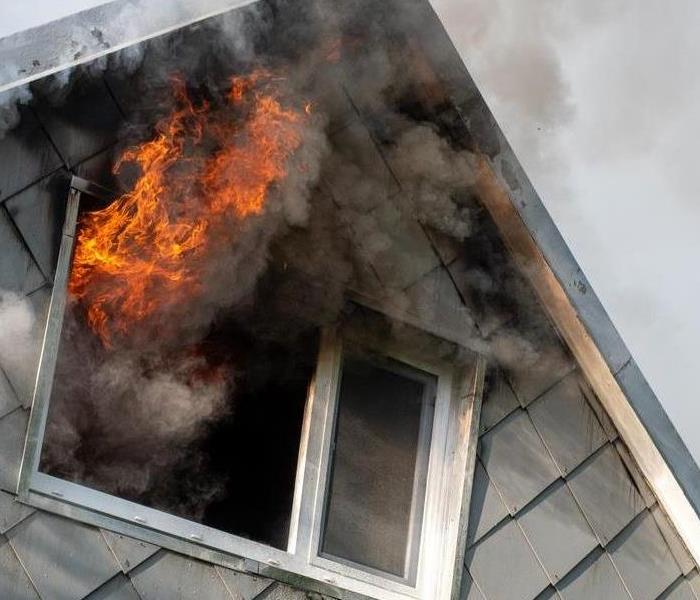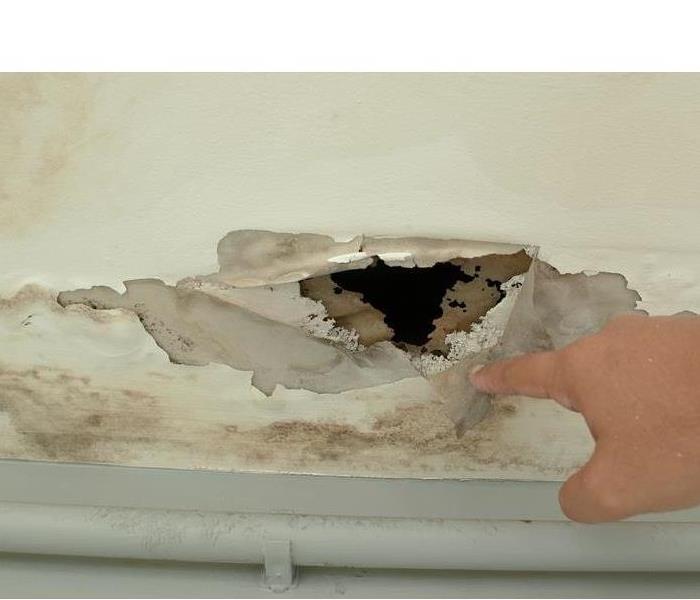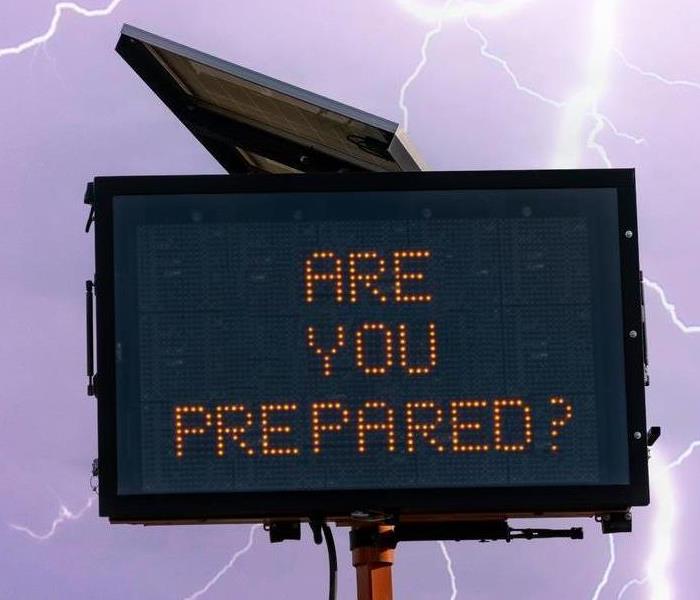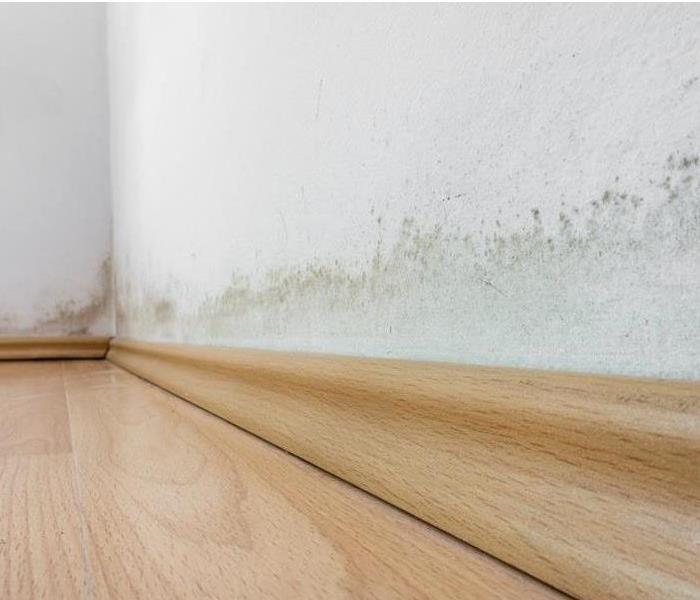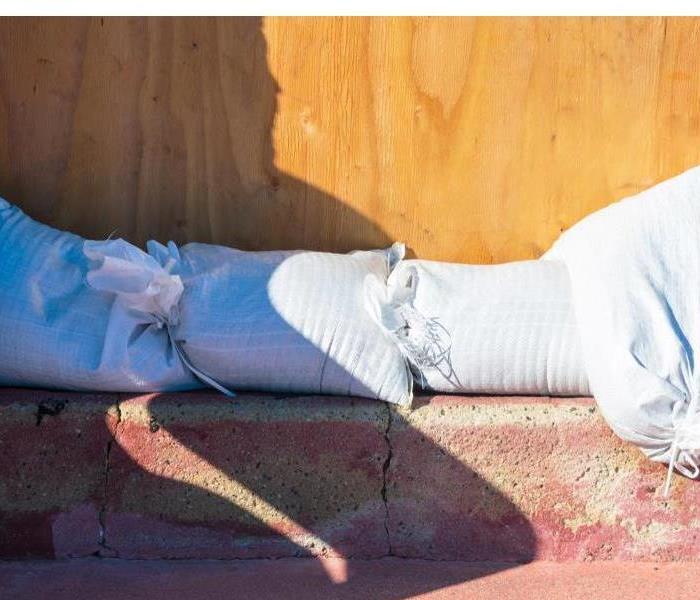Recent Posts
The Most Common Places Where Fire Damage Can Occur
1/17/2025 (Permalink)
Fires can cause catastrophic damage to homes and businesses, leaving behind the physical, emotional, and financial devastation. While fires can start anywhere, certain areas in your home or business are more prone to ignition due to the nature of the materials, activities, or appliances involved. Understanding these fire risk zones is key to preventing a disaster and ensuring you are prepared to respond effectively if a fire does occur.
Kitchens: The Number One Fire Risk Zone
Unsurprisingly, the kitchen is one of the most common areas where fires start. Cooking accidents—such as unattended stovetops, overheated oils, or electrical malfunctions with appliances—are frequent causes of kitchen fires. According to the National Fire Protection Association (NFPA), cooking equipment is the leading cause of residential fires.
Tips to prevent kitchen fires:
- Never leave cooking food unattended, especially when using hot oil or open flames.
- Keep flammable items like towels, paper products, and dishcloths away from the stovetop.
- Ensure your smoke detectors are functional and located near the kitchen but not directly over the stove to avoid false alarms.
- Regularly inspect kitchen appliances for signs of wear or malfunction and ensure they are adequately maintained.
Bedrooms: Risk of Electrical Fires
Bedrooms often have electronic devices like lamps, alarm clocks, space heaters, and charging devices. Electrical fires, especially from faulty wiring, old appliances, or overused extension cords, can ignite unnoticed, particularly while you're asleep.
Tips to prevent bedroom fires:
- Avoid overloading electrical outlets or using damaged extension cords.
- Unplug electrical appliances and devices, especially space heaters and electric blankets, when not in use.
- Replace any frayed or exposed wires immediately.
- Keep flammable materials like bedding and curtains away from heat sources.
Garage: A Hotspot for Fire Hazards
Garages often contain highly flammable substances like gasoline, cleaning agents, oils, and propane tanks. Combining combustible liquids and heat from appliances like water heaters, furnaces, or tools creates a perfect storm for a fire to ignite. Electric tools or equipment in the garage can also pose risks, primarily if not correctly maintained.
How to prevent fires in the garage:
- Store flammable liquids in approved containers and away from heat sources or open flames.
- Keep the garage clean and free from clutter, especially combustible materials.
- Ensure your garage is properly ventilated to prevent the accumulation of fumes from chemicals or fuel.
- Install a smoke detector or heat sensor in your garage, particularly if attached to your home.
Laundry Rooms: A Hidden Source of Fires
Many homeowners don't realize that laundry rooms can be a significant fire risk, mainly when dryers are improperly maintained. Lint buildup in dryer vents and ducts is one of the leading causes of laundry room fires. Additionally, electrical malfunctions in washers, dryers, or other appliances can contribute to the risk.
How to prevent laundry room fires:
- Clean the lint trap in your dryer after every use, and regularly inspect and clean the dryer vent and ductwork.
- Don't overload the dryer; always follow the manufacturer's instructions for safe operation.
- Never leave the dryer running while you're away or asleep.
- Have your dryer inspected and serviced regularly, especially if it's older.
Trust SERVPRO of Patchogue for Fire Damage Restoration
By being vigilant in high-risk areas of your home—like the kitchen, bedroom, and garage—you can significantly reduce the likelihood of a fire starting. Remember, the best defense against fire is prevention.
However, acting quickly is essential if you experience fire damage despite your precautions. Our team at SERVPRO can provide professional fire damage restoration to help mitigate the effects of smoke and fire damage, restoring your home to its pre-damage condition and giving you peace of mind.
The Different Types of Water Damage: Clean, Grey, and Black Water
12/16/2024 (Permalink)
When a property deals with water damage, especially water damage that comes from issues in a building’s plumbing system or appliances, it is essential to understand that different types of water can require different responses and cleanup. Water damage is often categorized into three main categories: clean, grey, and black. These categories breakdown water damage from the safest to the most hazardous. This article will define each water type, provide examples, and explain how this water damage can be handled.
What Is Clean Water In Regards To Water Damage?
Clean water refers to water that comes from a clean source. For example, if a faucet breaks or a supply breaks, that water would be as clean as the water that usually comes out of the faucet. The water damage does not pose an initial threat to the health and safety of the occupants but still needs to be cleaned up to prevent water damage caused by excess moisture.
What Is Grey Water Regarding Flooding?
Grey water refers to contaminated water. For example, if a washing machine or dishwasher overflows or starts leaking, the water will be contaminated with soap, bleach, dirt, and debris. Grey water poses some potential health risks if someone were to touch it or accidentally consume it. The water may be filled with bacteria, which might lead to mold growth. When cleaning up grey water, water damage cleanup crews need tower protective equipment to prevent coming into contact with the water.
What Is Black Water?
Black water refers to water that is especially hazardous to someone’s health. This would be water containing pathogens, human waste, or other materials that could cause serious health problems if someone was exposed to or accidentally consumed it. The most common example of this for most properties is sewage. If the bathroom sink faucet breaks, the water damage must be dried. However, if the toilet has issues that cause waste water to spill out on the floor, a team to safely collect and dispose of the sewage will be required. The team must take extreme precautions and thoroughly disinfect the area as they clean.
Water Damage Cleanup in Patchogue, NY
Our teams of water damage cleaning professionals can help clean clean, grey and black water. If you need water damage cleanup professionals, give our SERVPRO® team a call.
Preparing an Emergency Kit for Storm Preparation
11/26/2024 (Permalink)
Severe weather can strike without warning, and having an emergency kit ready can be the key to staying safe and avoiding panic. Storms—whether hurricanes, tornadoes, or blizzards—can disrupt your life quickly, but with the right supplies, you and your family can confidently handle the situation. Your emergency kit should have everything you need to stay safe and comfortable for at least 72 hours. We’ll guide you through the essential items to include in your storm preparedness kit.
Water and Non-Perishable Food
An essential emergency kit item is a reliable water and food supply. Plan for at least one gallon of water per person daily for drinking and sanitation, along with a three-day supply of non-perishable food items. Canned goods, granola bars, and dried fruit are excellent choices, as they are easy to store and don't require refrigeration. Remember to have a manual can opener if you're packing canned food.
Flashlights and Batteries
Power outages are common during severe storms, so having a reliable light source is essential. Flashlights and extra batteries are a must, along with extra batteries, to ensure they keep working when you need them most. Consider investing in rechargeable flashlights or even headlamps for hands-free lighting. Solar-powered lights are also a great addition to your kit if you want an eco-friendly option.
First Aid Kit
Accidents can happen in any emergency, so it's important to have a well-stocked first aid kit on hand. Your kit should include bandages, antiseptic wipes, gauze, adhesive tape, pain relievers, and any prescription medications you or your family may need. Don't forget personal hygiene items like hand sanitizer; clean hands are critical during an emergency.
Weather Radio
A weather radio is a vital tool for staying informed during a storm. These radios provide real-time weather alerts, including emergency broadcasts and evacuation instructions. Battery-powered or hand-cranked models are the most reliable when power goes out. Ensure the radio is tuned to your local emergency broadcast frequency, and test it periodically.
Blankets, Warm Clothing, and Rain Gear
Severe storms can bring fluctuating temperatures, so having enough clothing to stay warm is crucial. Pack thermal blankets, rain jackets, and sturdy footwear for everyone in your household. Ensure your emergency kit includes extra warm clothing, especially if you live in an area prone to winter storms.
Important Documents and Cash
A copy of your important documents—such as identification, insurance policies, and medical records—can be a lifesaver in an evacuation. Please keep them in a waterproof bag to protect them from the elements. It's also good to store cash in small denominations, as ATMs and credit card systems may be down during a storm.
Storm Damage Restoration with SERVPRO of Patchogue
Preparing for a storm means thinking ahead and having the right supplies. Even with planning ahead, storm damage can still happen. At SERVPRO of Patchogue, we specialize in storm damage restoration to get your home back to its original condition. We will make it “like it never even happened!”
Signs That Your Property Has Mold
10/23/2024 (Permalink)
Mold is more than ugly; it can pose a severe risk and damage your property. Recognizing the signs of mold early can help save you money, time, and stress. At SERVPRO of Patchogue, we provide mold detection, removal, and remediation to help prevent further mold growth. Here are some key things to look out for that might indicate mold in your home.
Mold Has a Musty Odor
One of the most common signs that mold is present in your home is a musty smell. If you notice a persistent, earthy odor that doesn't go away with basic cleaning—especially in areas with high moisture levels—this could indicate mold growth hidden somewhere. Bathrooms, basements, and window sills are all familiar places with mold. If you smell musty odors, those are the places that you should check first.
Mold Growth From Previous Water Damage
If your home has experienced water damage–from flooding and storm damage to plumbing issues and simple leaks—it can cause mold growth if left untreated. Look for signs of water damage, such as stains, discoloration, or even peeling paint in more extreme cases. This could indicate a leak or moisture issue leading to mold growth. Inspect any plumbing system, rods, and wind for any sign of water infiltration.
Mold Can Cause Health Issues
Another vital sign that mold may be present in your home or business is if you or your family members have experienced unexplained health issues. Pay extra attention to symptoms, specifically when experiencing symptoms, as it can worsen when near the mold. For example, if you leave for an extended period and these symptoms clear up but return when you get home, it could be a sign of mold.
Mold Can Hide Behind Warped Walls and Peeling Wallpaper
As mentioned above, mold grows primarily due to prolonged moisture that has not been adequately handled. If you have any wood, drywall, or other materials in your home that are warped or swollen, this is due to moisture exposure and could indicate hidden mold growth behind the affected materials. Another sign to look for is peeling wallpaper, which is also mentioned above. If wallpaper is bubbling or peeling, it shows moisture behind the surface and could indicate mold growth.
Mold Can Grow on House Plants
Believe it or not, mold can grow on house plants that lack adequate drainage or excess moisture in the air. Although these types of mold may not necessarily be harmful, they can release mold spores into the air, which could land on other surfaces and lead to further mold growth. Check your home's humidity levels if you notice mold on your plants.
Work with SERVPRO of Patchogue for Mold Detection & Removal
Mold can pose serious health risks and damage property, resulting in expensive and time-consuming repairs if left untreated. Regular inspections and maintenance can help prevent mold growth, but if you notice some of the signs listed above, it's best to call the professionals at SERVPRO. Consider consulting our team to assess the situation and ensure a safe, mold-free environment in your home.
Minimize Storm and Flood Damage with These Tips
9/23/2024 (Permalink)
If you’re located in Patchogue, NY, we understand that the perks of coastal living also bring the risk of flooding during storms. Preparing yourself for a potential storm can protect your property and minimize the storm damage—plus, it will keep your loved ones safe if evacuation isn’t necessary. Here are some essential tips to prepare you for the next storm.
Flood Preparedness Step #1: Know Your Flood Zone
Due to its coastal location on Long Island, Patchogue, NY, is a flood-prone region–especially if your home or business is on the waterfront. The first step to flood preparedness is understanding whether your home is in a high-risk flood zone. You can use FEMA’s flood maps resource to identify your zone and determine your flood insurance requirements. Homeowners and business owners in these areas are encouraged to take additional precautions to protect their property from flood damage.
Flood Preparedness Step #2: Invest in Flood Insurance
If you are in a flood-prone area like Patchogue, NY, you should consider getting an insurance policy covering flood damage. Standard policies typically don’t cover flood damage, so speak with your representative to ensure it’s added. Investing in a separate flood insurance policy is crucial in Patchogue, where storm surges and heavy rain can lead to flooding. Discuss coverage options with your insurance provider and ensure you’re adequately protected.
Flood Preparedness Step #3: Create a Home Flood Plan
Another step you can take to protect your home and business from flood damage is to create a solid flood emergency plan. This is also important to keep your family safe during evacuation. The plan should have safe and accessible evacuation routes into the community in the event of a severe flood. Ensure that you and your family know where to go and establish strong lines of communication in case of separation. Prepare documents, fire-aid supplies, medications, food, and water.
Flood Preparedness Step #4: Install A Sump Pump
If you have a basement in your home or business, it is prone to flooding with even a tiny amount of rain. Installing a sump pump can prevent water accumulation. This will reduce the risk of severe interior flooding, as the sump pump will be triggered once the water reaches a certain level. You should also ensure the sump pump has a backup battery during a power outage. This will ensure the pump works correctly even if the power goes out and all water is effectively removed.
Flood Preparedness Step #5: Clear Gutters and Drains
Another step to prepare your home for floods is to clear out any gutters and draining systems. Gutters are installed to direct any water away from your home’s foundation. That said, clogged gutters and downspouts can pool water around your foundation, increasing the chances of cracks leading to flooding. Clean your gutters regularly and ensure water is directed away from your home. If necessary, consider installing gutter guards to prevent debris buildup.
Hire SERVPRO of Patchogue, NY, for Storm Damage Restoration
Being proactive about flood preparedness is critical in safeguarding your home and loved ones. Following these tips and staying up-to-date with weather conditions can help minimize overall storm damage and reduce the long-term effects of flooding. If you’re located in Patchogue on Long Island and have experienced water and storm damage, we can help you restore your home. Take action now to protect your home before the next storm hit.
The Risk of Compounding Home Damage After a Storm | SERVPRO of Patchogue
2/20/2024 (Permalink)
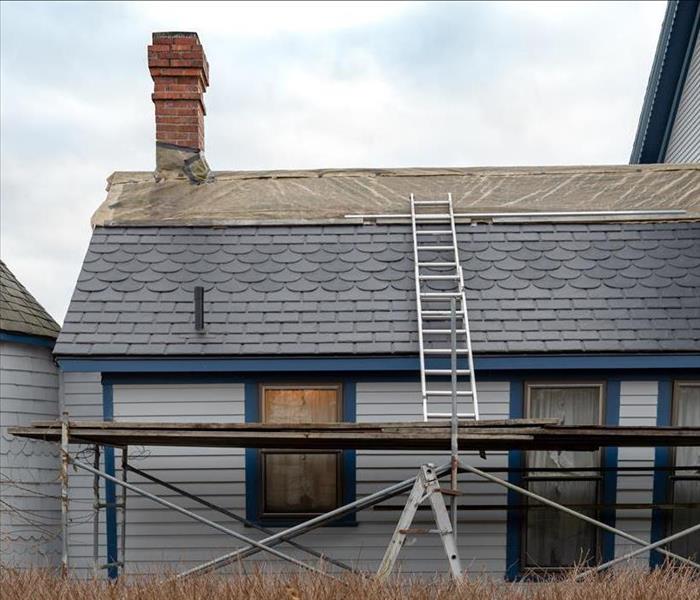 We are no stranger to helping recover homes from storm damage. Call SERVPRO of Patchogue today for quick assistance!
We are no stranger to helping recover homes from storm damage. Call SERVPRO of Patchogue today for quick assistance!
Our homes protect us every day from weather threats whether we know it or not. The heat, humidity, bitter wind and strong storms can impact our walls and roofs while we stay safely tucked away inside.
However, our homes are not invincible and can suffer the weight of constant threats and impacts. Damage can occur in an instant and leave your home vulnerable to the elements.
Quick action is necessary to not only fix the damage, but to also prevent further damage from occurring to your home. SERVPRO of Patchogue is here to offer fast restoration service after a storm!
The Dangers of Wind
We all know how strong the wind can be whipping off of the bay, and it can really pick up speed depending on the current threat. Regular thunderstorms can bring moderately high winds, but coastal storms and hurricanes can easily bring wind that tops 100 miles per hour or more. These sudden bursts of wind can cause all kinds of damage in seconds.
When the wind picks up, debris can easily be thrown about your yard and thrown against your home. Impact damage from a broken tree limb or even something huge like a flying trampoline can cause severe damage to your roof or siding, but it can also lead to water damage over time.
Broken windows or parts of your home that have been exposed to the elements for any period of time can become soaked if the rain starts to fall. Not only do you have structural damage, you now have water damage, too.
The Danger of Water
Water can be just as frustrating. Strong summer storms can bring heavy rain, hurricanes can push the bay up onto our properties and heavy snowstorms can cause issues when the snow starts to melt in the springtime. Each instance comes with its own risk, but water can easily infiltrate your homes. Even just the tiniest gap or crack along your roofline or foundation can become problematic for you.
If the water isn’t cleaned up quickly, it can easily seep and leak behind your walls and under your floors, becoming virtually impossible to dry up without professional help. If any sort of moisture is lingering behind your walls, mildew and mold can become a problem. Over time, a mold infestation can break down your structural beams and can even become a health hazard for your family.
What We Can Do to Help
We know that time is of the essence when it comes to home emergencies, which is why we jump right into action the second you call us. The longer damage sits, the worse it can become and higher the risk of compounding damages.
We will simultaneously work on securing your home from further damage, address structural issues, water problems and even mold infestations all at once. Our goal is to return your home to its pre-storm damage state as quickly as possible.
Storm damage can be severe. Contact SERVPRO of Patchogue for immediate restoration assistance.
What the Polar Vortex Means for Your Pipes
1/15/2024 (Permalink)
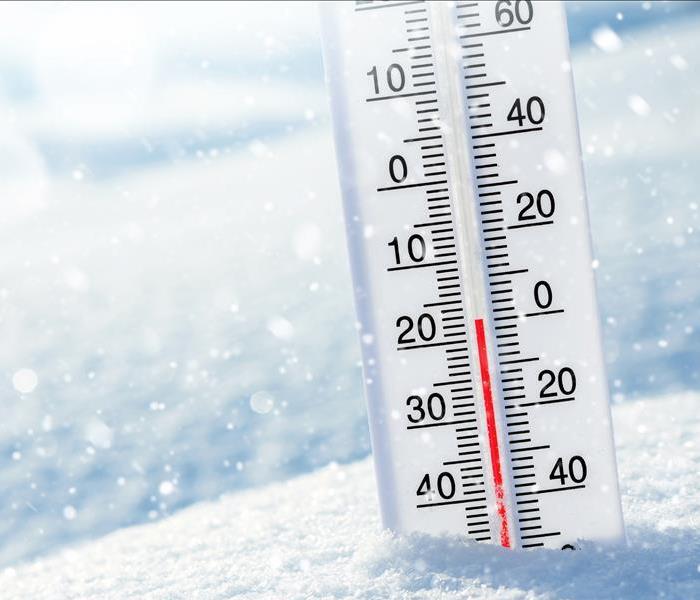 Polar Vortexes bring exceedingly cold temperatures
Polar Vortexes bring exceedingly cold temperatures
As the winter weather continues, "Polar Vortexes" become far more likely, signaling plummeting temperatures and severe weather conditions. This meteorological term, often associated with bone-chilling cold, can have a profound impact on daily life, particularly for homeowners and business owners. In addition to several drops in temperature to worry about, polar vortexes also heavily affect plumbing systems. As temperatures dive, the risk of pipes freezing and subsequently bursting increases, potentially leading to severely damaging water floods. Understanding the polar vortex, how it affects plumbing piping, and the necessary preventive measures are essential for bracing for the winter months. SERVPRO of Patchogue has crafted some preventive measures you can utilize to ensure your plumbing stays safe during the ongoing polar vortex.
Understanding the Polar Vortex and Its Impact
A polar vortex is essentially a vast expanse of swirling cold air that typically envelopes the polar regions. However, during the winter, the vortex at the North Pole often expands, pushing frigid air toward the equator and affecting much of the Northern Hemisphere. This shift can result in a sudden and steep drop in temperatures, often catching businesses and residences off-guard.
The critical issue with these plummeting temperatures is their effect on water pipes. Water expands when it freezes, and this expansion can exert extraordinary pressure on pipes, regardless of whether they are made of metal or plastic. When the pressure becomes too great, pipes can burst, leading to water damage, the potential for mold growth, and the need for repairs on top of restoration and cleaning services.
Prevention and Protection
To mitigate the risks of a polar vortex freezing your pipes, consider the following preventive steps:
- Insulate Pipes: Wrapping exposed pipes in foam insulation, particularly those in unheated areas like basements, attics, and garages, can significantly reduce the risk of freezing.
- Maintain Consistent Indoor Temperature: Keeping your home heated consistently, even when you're away, helps keep the internal temperature of pipes above freezing.
- Allow Faucets to Drip: Allowing a slight drip in faucets can prevent pressure buildup within pipes, reducing the risk of freezing and bursting.
- Drain Water from Pools and Sprinklers: Drain water from the swimming pool and sprinkler supply lines following the manufacturer's instructions.
- Close Inside Valves Supplying Outdoor Hose Bibs: After removing and draining outdoor hoses, close the inside valves that supply these bibs but leave the outside valve open.
- Insulate Vulnerable Spaces: Increase insulation in areas like attics, basements, and crawl spaces to maintain higher temperatures.
- Open Cabinet Doors: Allow warmer air to circulate around plumbing by opening kitchen and bathroom cabinet doors.
The polar vortex, while a natural weather phenomenon, poses a significant challenge to plumbing, particularly regarding the risk of frozen and bursting pipes. By understanding this meteorological event and taking proactive, preventative measures, you can safeguard your home against the potentially devastating and costly consequences. Prevention actions are far more effective and less costly than repair. Stay warm, stay informed, and prepare your home for whatever the winter brings.
Should you incur any water or storm damage during the Polar Vortex, feel free to contact SERVPRO of Patchogue, and we'll make it "Like It Never Even Happened!"
Bracing for Coastal Flooding: Preparation Tips and Early Warning Signs from SERVPRO of Patchogue
1/9/2024 (Permalink)
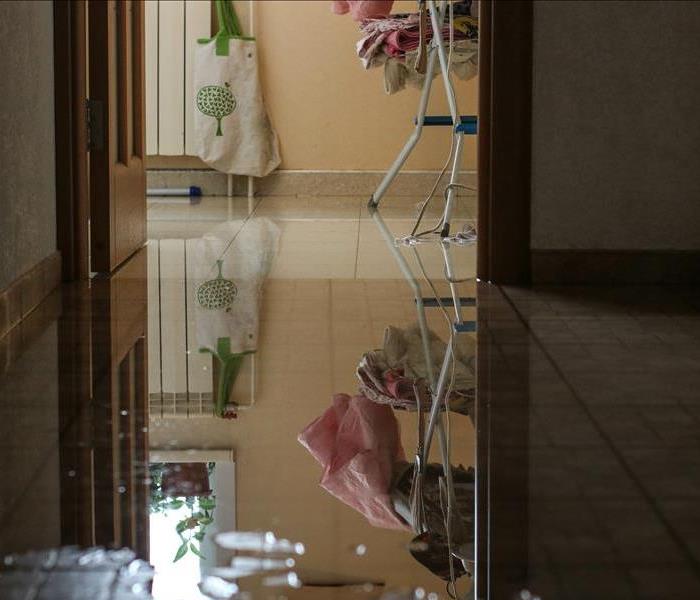 The Aftermath of Water Inundation
The Aftermath of Water Inundation
The National Weather Service has recently declared a Coastal Flood Warning for Long Island. Members of Long Island communities could experience road closures, tidal surges, inland flooding, and more. To help our valued communities stay safe and protected during the duration of this Coastal Flood Warning, SERVPRO of Patchogue has compiled a comprehensive guide on how to prepare for coastal flooding, including early warning signs and preparation tips.
Early Warning Signs
- Monitor Weather Updates: Stay informed about weather conditions through reliable sources. Pay attention to warnings and advisories issued by local authorities.
- Tidal Predictions: Keep an eye on tidal predictions, especially during high tide cycles. The National Weather Service provides vital information on expected inundation levels, along with local news sources.
- Wind and Wave Conditions: Large breaking waves of 15 to 20 feet along the oceanfront, along with west-to-southwest gale winds, can contribute to coastal flooding. Regularly check wind and wave forecasts for your area.
Preparation Tips
- Evacuation Plan: Develop a clear evacuation plan, including the nearest shelters and evacuation routes. Familiarize yourself with community evacuation procedures, and communicate the plan with your family.
- Secure Valuables: Move valuable belongings to higher ground, especially in basements and low-lying areas. Consider using waterproof containers for essential documents, ensuring they remain protected in the event of flooding.
- Emergency Kit: Assemble a comprehensive emergency kit with essential supplies. Include non-perishable food, an ample supply of water, medications, a flashlight, extra batteries, and a well-stocked first aid kit.
- Property Protection: Take proactive measures to safeguard your property. Install flood barriers or sandbags around your premises, particularly if you reside in vulnerable areas. Elevate electrical appliances and furniture to minimize potential damage.
- Vehicle Safety: Be cautious about where you park your vehicles. Avoid low-lying or vulnerable areas near the waterfront, and move your vehicles to higher ground to prevent flood damage.
- Communication Plan: Establish a communication plan with family members and neighbors. Ensure everyone is aware of emergency contact information, evacuation plans, and meeting points.
- Stay Informed: Stay up-to-date on the latest developments by continuously monitoring weather updates through official channels. Be prepared to adapt your plans based on the evolving situation and any additional advisories.
- Clearing Drainage: Ensure that drains and gutters around your property are clear of debris. This helps prevent water buildup and facilitates proper drainage during heavy rainfall, reducing the risk of localized flooding.
SERVPRO of Patchogue's Water and Storm Damage Restoration Expertise
In the aftermath of coastal flooding, SERVPRO of Patchogue stands ready to provide swift and efficient water and storm damage restoration services. Our highly skilled restoration team is equipped to handle the aftermath of flooding, offering comprehensive solutions to mitigate damages, restore affected areas, and make it "Like It Never Even Happened™". SERVPRO of Patchogue brings trusted expertise to Long Island, aiding residents in the restoration process and offering peace of mind during challenging times.
Conclusion
While the Coastal Flood Warning remains active, it is important that Long Island Residents such as yourself stay safe and prepared. Implementing preparation tips such as creating a clear evacuation plan, securing valuables, and maintaining a comprehensive emergency kit demonstrates proactive readiness and helps avoid disaster. Property protection measures, thoughtful parking choices, and clearing drainage contribute to minimizing potential damage. Clear communication with family and neighbors, coupled with continuous monitoring of weather updates, enhances community resilience.
Should you incur any water and storm damage during the Coastal Flood Warning, feel free to contact SERVPRO of Patchogue, and we'll make it "Like It Never Even Happened!"
How to Handle Water Damage at Home | SERVPRO of Patchogue
12/19/2023 (Permalink)
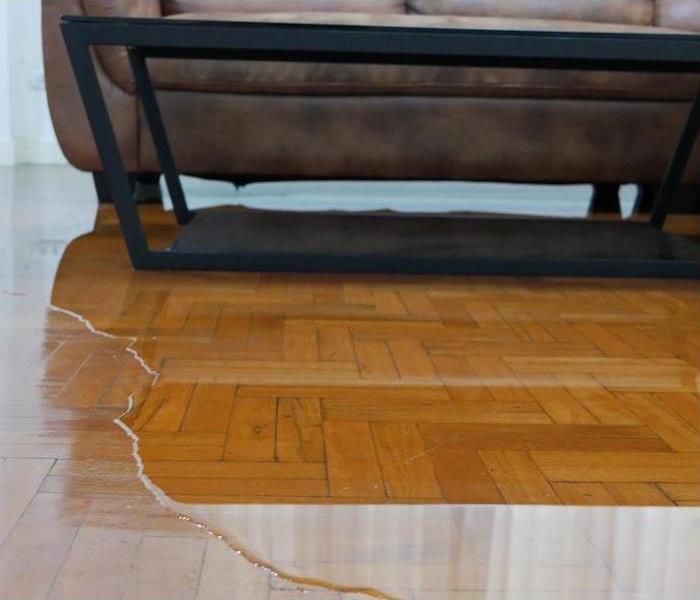 SERVPRO of Patchogue has got your back when water damages your property. Contact us for a faster response to any size disaster!
SERVPRO of Patchogue has got your back when water damages your property. Contact us for a faster response to any size disaster!
Water damage is a pervasive issue that can significantly impact the structural integrity of a home. Mitigating the risk of water damage requires a proactive and strategic approach.
Here are a few key steps that homeowners can take to prevent water damage and protect their investments.
<h3maintenance-and-inspection">Regular Maintenance and Inspection
Routine maintenance and inspections are critical in identifying and addressing potential vulnerabilities before they escalate. Regularly check your roof, gutters and downspouts to ensure they are free from debris and properly functioning. Inspect your plumbing system for leaks, drips and any signs of corrosion.
However, it’s not enough to just identify the problems! Timely repairs will make all the difference in preventing a minor issue from turning into a major need for water damage repair and restoration work.
Proper Landscape Grading and Drainage
The landscaping around your home plays a big role in preventing water damage. Ensure that the ground around your foundation slopes away from the house. Proper grading and drainage can redirect water away from your home, reducing the risk of water accumulation near the foundation.
Adequate Sealing and Insulation
Sealing gaps and cracks in your home’s exterior can prevent water from seeping through and causing damage. Ensure that your doors and windows are properly sealed and that your home’s insulation is in good condition.
Proper insulation not only prevents water infiltration but also regulates indoor humidity levels, which can further mitigate the risk of water-related issues like mold and mildew growth.
Regular Appliance Maintenance
Appliances that use water, such as washing machines, dishwashers and water heaters, should be regularly inspected and maintained. Check for leaks, replace worn components and ensure that you have proper drainage.
Swift Response to Leaks
Even the smallest leaks can lead to significant water damage if left unattended. Act swiftly if you notice any signs of water leakage, such as water stains, mold growth or musty odors. Addressing leaks promptly can prevent them from escalating into larger, more costly issues.
Preventing water damage requires a proactive approach. While these measures can significantly reduce your risk of water-related issues, unforeseen circumstances can still arise. Luckily, that’s what we’re here for!
When you need water damage repair and restoration work, our SERVPRO® technicians are ready to help. With our knowledge, equipment and proven techniques, we can effectively assess the extent of the damage, implement a comprehensive restoration plan and restore your home to its original condition.
Contact us today for water damage repair and restoration work. Our goal is to return your property back to preloss condition as quickly and seamlessly as possible!
Flooded basement and first floor
12/18/2023 (Permalink)
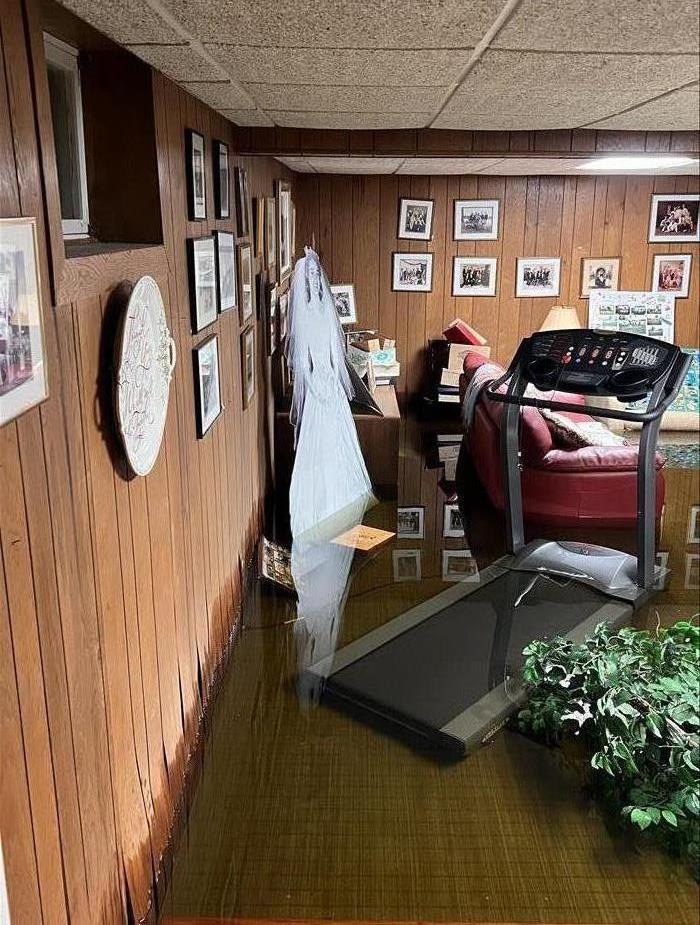 Flooded basement caused by broken pipe
Flooded basement caused by broken pipe
Not a way to start the night. This customer came home to a house flooded from 1st floor to basement. Our crew came in immediately to take out the water, remove wet contents, dry carpets, and place down equipment.#teamluzzi #flooded #waterrestoration #waterremoval




 24/7 Emergency Service
24/7 Emergency Service
